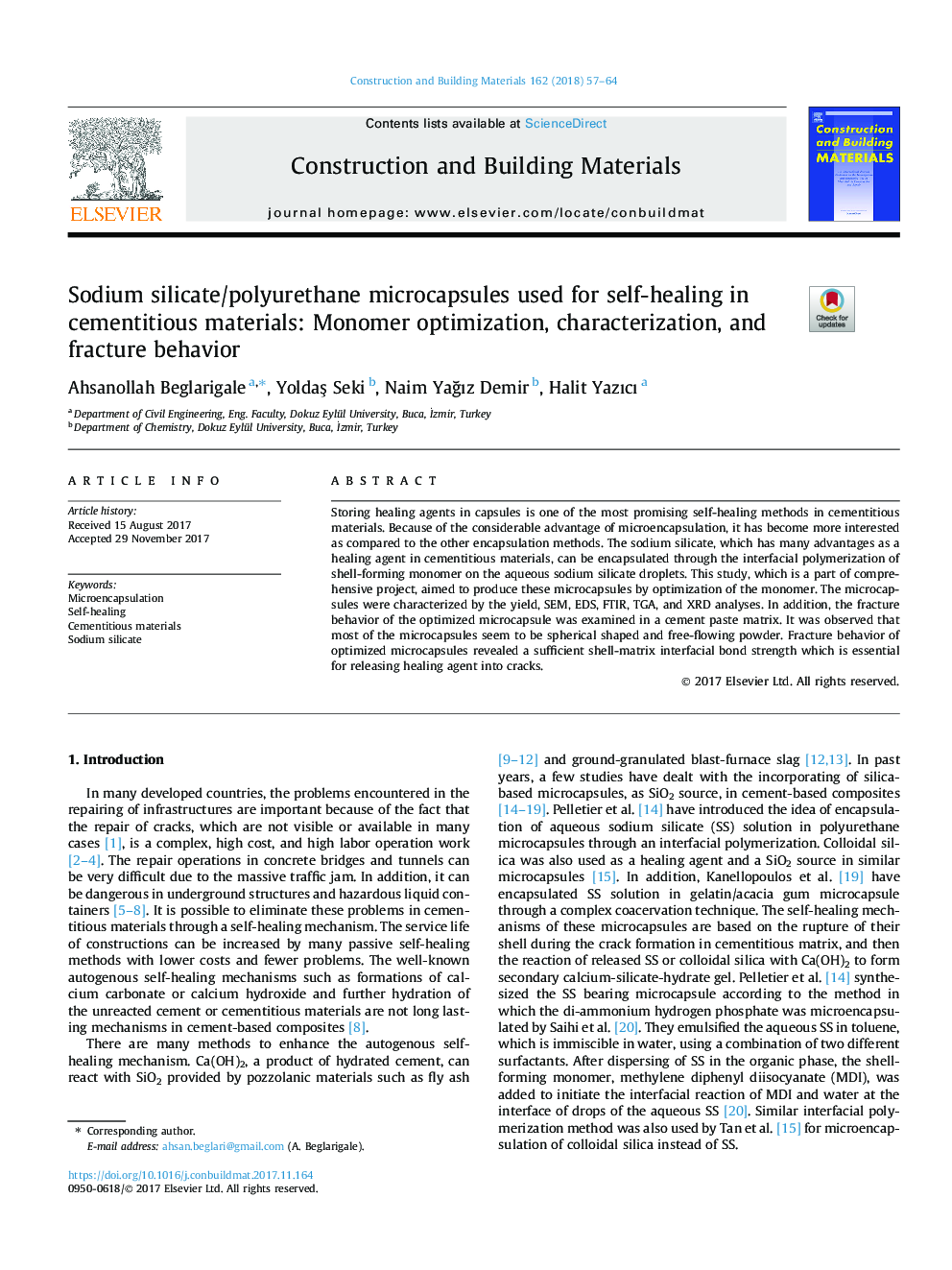| Article ID | Journal | Published Year | Pages | File Type |
|---|---|---|---|---|
| 6716402 | Construction and Building Materials | 2018 | 8 Pages |
Abstract
Storing healing agents in capsules is one of the most promising self-healing methods in cementitious materials. Because of the considerable advantage of microencapsulation, it has become more interested as compared to the other encapsulation methods. The sodium silicate, which has many advantages as a healing agent in cementitious materials, can be encapsulated through the interfacial polymerization of shell-forming monomer on the aqueous sodium silicate droplets. This study, which is a part of comprehensive project, aimed to produce these microcapsules by optimization of the monomer. The microcapsules were characterized by the yield, SEM, EDS, FTIR, TGA, and XRD analyses. In addition, the fracture behavior of the optimized microcapsule was examined in a cement paste matrix. It was observed that most of the microcapsules seem to be spherical shaped and free-flowing powder. Fracture behavior of optimized microcapsules revealed a sufficient shell-matrix interfacial bond strength which is essential for releasing healing agent into cracks.
Related Topics
Physical Sciences and Engineering
Engineering
Civil and Structural Engineering
Authors
Ahsanollah Beglarigale, YoldaÅ Seki, Naim YaÄız Demir, Halit Yazıcı,
